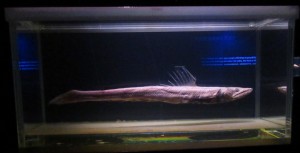The Abyssopelagic zone is the 4th layer of the ocean, and refers to waters 4000m to 6000m deep.
The title, “Abyssal Plain” refers to sediment-covered ocean floors which can be found at 3000m to 6000m deep. They cover more than 50% of the Earth’s surface and are made up of mid-ocean ridges, island arcs, ocean trenches, and the rest of the plains occasionally punctured by seamounts. The ocean floor can be said to be the final receptacle of all food that filters down the water column. However, only 0.5% – 2% of the organic matters reaches this zone, as the organic flux depends on the production in the upper oceanic zones.
Difficult to collect information
Historically, it has been difficult to collect information at this zone due to its sheer vastness and remoteness of the abyss. However, recent expeditions found that high biodiversity are still present. (i.e. up to 2000 species of bacteria, 250 species of protozoans, and 500 species of invertebrates.

The sea spider which can grow up to 30cm: paces slowly along the ocean floor in search of sponges, coral or anemones to feed on.

The Deep-sea Lizardfish can be found on abyssal plains up to 4500m deep. While it is badly adapted for swimming, it waits for its prey while raising its head, like how a lizard would.